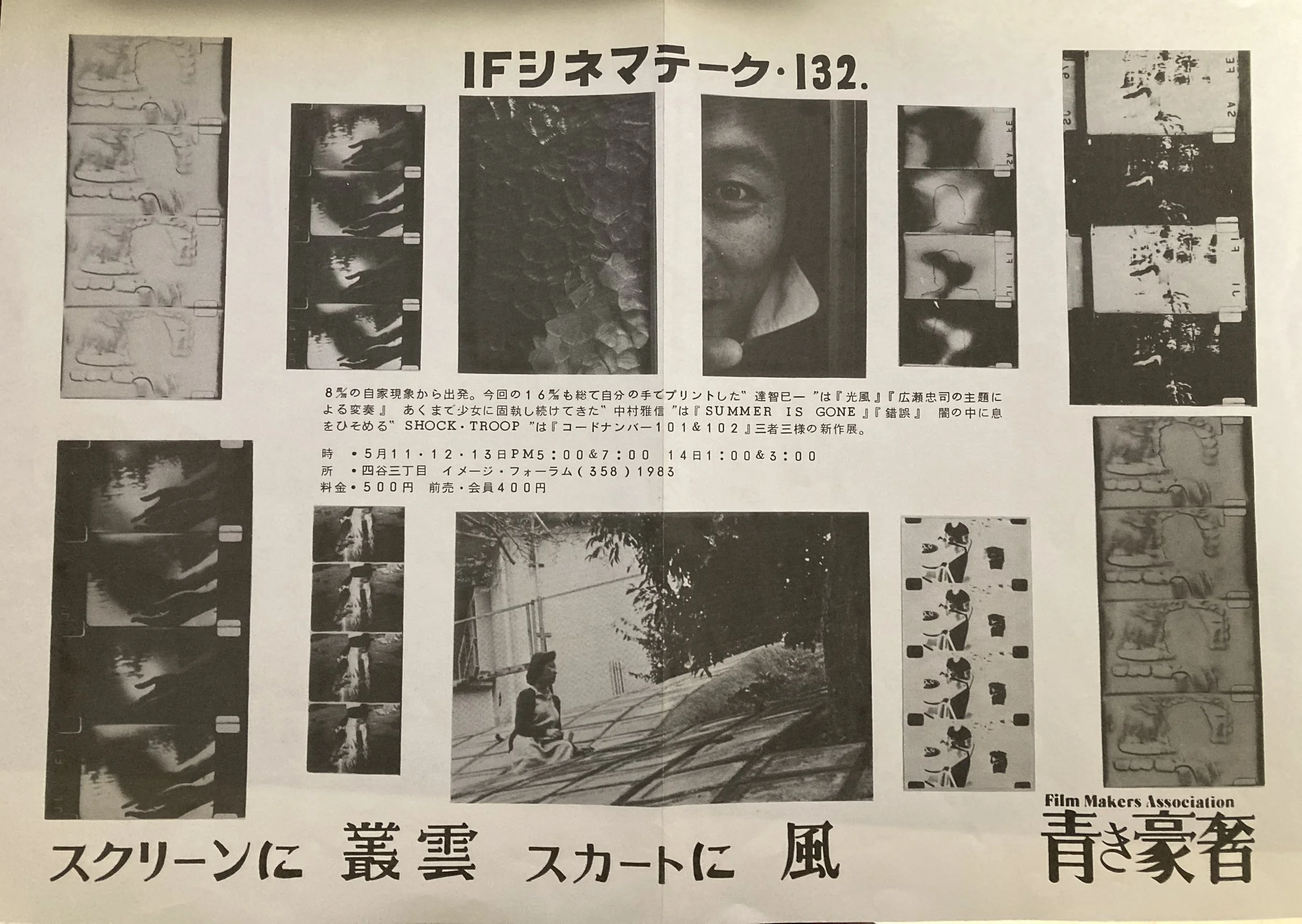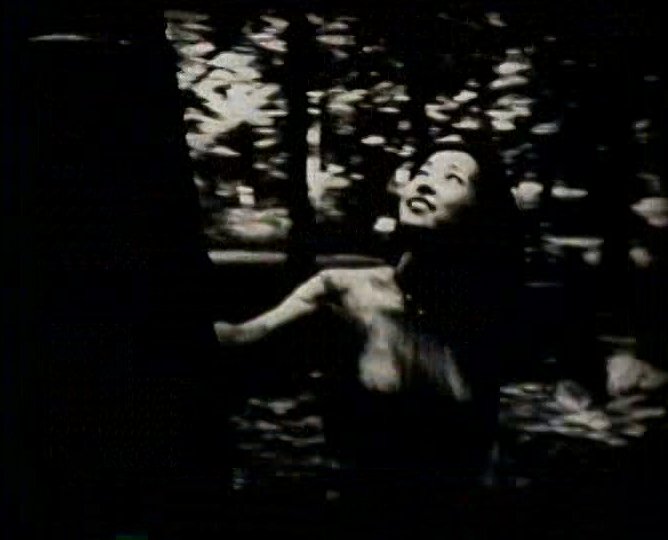Masanobu Nakamura & TOUCH ME
Poster of ‘blue luxury’ screening event.
For the month of May, CCJ welcomes back Akihiro Suzuki of Art Saloon to commemorate filmmaker Masanobu Nakamura, who passed away in March. An online screening will be presented in May, and in conjunction for CCJ Members, Suzuki has programmed a special viewing of works by Nakamura and his brother, Touch Me.
Program
Masanobu Nakamura, SPRING HAS COME, 1977, 18 min., color
Touch Me (逹智巳一), Shining Breeze (光風 - Kō-Fū), 1977, 11 min., b&w
The programs will be available for viewing on CCJ’s viewing platform.
This Members Viewing program is supported, in part, by a grant from the Toshiba International Foundation.
Masanobu Nakamura & Touch Me, and the Blue Luxury
Introduction by Akihiro Suzuki, translated by Colin Smith
In the mid-1970s, Masanobu Nakamura and Shock Tloop (a pseudonym ) formed a filmmakers’ association known as Aoki-Gōsha (“blue luxury”). Nakamura's younger brother who went by the name Touch Me also joined that group. The association’s name was taken from a line in a verse by the painter and poet Kaita Murayama. The filmmakers in the group were diverse in terms of creative character, but all except Masanobu Nakamura stopped producing work after a short period of time and distanced themselves from the cinema scene. In the world of independently produced films from the 1970s onward, there were many filmmakers who created extraordinary works and yet soon became inactive and subsequently invisible.
Touch Me was only active for a few years in the 1970s, but starting with his early 8mm works, he developed his own film and pursued a unique visual style using distinctive techniques such as experimenting with time-lapse imagery. In Kō-Fū, he transformed everyday snapshots into a world of intense luminosity by applying frame-by-frame optical processing using an optical printer he made himself. Kō-Fū translates as “Shining Breeze” and refers to “a scene of rice fields just after a typhoon has gone, when it is still windy and the leaves of rice are waving in the stream of wind with raindrops which are shining by reflecting the sunlight.” He produced ten films employing original techniques that were immensely time-consuming, but only three have been located today. He is one of the filmmakers of the 1970s who are ripe for rediscovery.
Nakamura’s Spring Has Come uses the technique of reshooting to transform a girl swinging on a swing set in a park at night into a fantastical scene. The rough, reshot 8mm film, the twinkling of light, and the motion-controlled images are brimming with fetishistic emotion.
Masanobu Nakamura and Touch Me are two brothers who pursued highly original modes of expression as filmmakers, and occupy an important position in Japanese experimental cinema.
More about Art Saloon:
Twitter
Art Saloon:https://twitter.com/SaloonArt
UNDERGROUND CINEMA FESTIVAL:https://twitter.com/2022Ucf
Instagram
UNDERGROUND CINEMA FESTIVAL:https://www.instagram.com/undergroundcinemafestival_2022/
Facebook
Art Saloon:https://www.facebook.com/Artsaloon.site/
Touch Me (逹智巳一), Shining Breeze (光風 - Kō-Fū), 1977, 11 min., b&w
Masanobu Nakamura, SPRING HAS COME, 1977, 18 min., color
MASANOBU NAKAMURA
Masanobu Nakamura was born in Shizuoka in 1949. After joining a film society at his university he spontaneously purchased an 8mm camera, and completed his first film, Disorder (1969), without any filmmaking expertise, learning by doing. Another Life (1976), which employs the technique of re-shooting filmed images on screen, was highly praised by Toshio Matsumoto and others, and he gained attention as an innovative new presence in experimental film.
He participated in the 100 Feet Film Festival, showing the 16mm works Bizarre Disease 1 (1977) and Commemorative Photo (1978). Takahiko Iimura arranged for Nakamura’s Summer is Gone (1978) to be screened overseas.
In the 1980s, Nakamura prolifically released experimental and provocative 16mm films. In 1985 he made Preview using a home video camera, and went on to make other films in various formats including 8mm, 16mm, and video. After premiering the controversial 142-minute For the Films That Are To Be Buried Alive (1989), which blends 8mm and 16mm, he began exploring new modes of landscape theory. He created works dealing with landscape and memory using 8mm film and Hi8 video, concluding with The Ghost of Memories (1997).
AKIHIRO SUZUKI
Born in 1961, Akihiro Suzuki is a producer and filmmaker who predominantly works in the field of underground culture-related projects, and has directed, distributed, produced, and organized film festivals and screenings. He is also the director of S.I.G. Inc., and the underground online cinematheque, Art Saloon. Representative directorial works include Looking for an Angel (1999), Lunar Child (2009) and Artaud Double (2013), a film of the performance by Masahiko Akuta and Ko Murobushi. Production projects include I Like You, I Like You Very Much (directed by Hiroyuki Oki) and Syabondama Elegy (directed by Ian Kerkhof). Film festival projects include the Tokyo Lesbian and Gay Film Festival, Underground Archives, among others.






